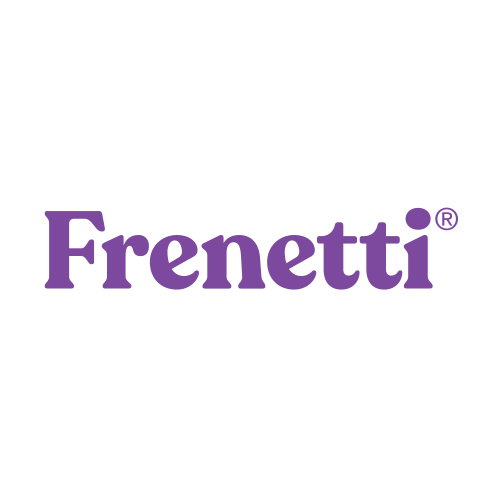
In your potential, where you stand and which specific steps you need to take
Examples of themes related to staff development: ‘Where are we?’ and ‘Where do we want to go?’ Prioritize taking goal-oriented action using the Frenetti Measurement, Learning and Optimization system.
-

Raising the level of performance and managing talent in a goal-oriented way
Decision-making and actions are currently mainly based on numbers of FTEs, initial and further education, training followed, the number of places available for patient or client care, the level of care, and talent management. However, it appears that despite these indicators, it is sometimes complicated and unfeasible to provide health care, and everything related, in a healthy manner at the set standard. Often the competence and skill level of the individual and the team mix is not taken into account. It is necessary to ensure that every professional and student can get the most out of themselves. This relates to the shaping of talent management. It is often unclear to the individual, the team, or even within the organization where the goals, potential, and need for development are.
Action and results
Ensure goal-oriented competence and performance development based on the detailed Frenetti assessments. Conduct a Needs assessment and monitor what is necessary, urgent, or desirable in terms of competence and performance development at both individual and team level. This prevents the inefficient use of training courses and e-learning. With goal-oriented training, workplace learning, and talent management based on a Needs assessment, the team will be sufficiently equipped to deliver the increasing complexity of care. This contributes to a reduction in avoidable incidents and an increase in the quality of care and safety, not only with regard to the care receiver but also to take care of the professionals and students. This is about offering perspective to those who are motivated. This can be in the form of a career path with reward in position and/or salary as skill levels are achieved.
-

Prevent unnecessary or inappropriate education and training
Education, training, etc., are offered by the organization, but the result of this is not always reflected in the workplace. This can have several causes. It appears that steps such as a Needs assessment are often skipped when developing a curriculum and instruction. This means that there is a significant risk that the training, learning materials, and learning activities offered are insufficient or do not match the needs of the person following the training or education. This can lead to unmotivated professionals or loss of professionals resulting in a possible increase or wastage of expenditure, time, and effort within the organization due to premature failure or delay. This is a disadvantageous situation for all concerned.
Action and results
Carry out a Needs assessment with the Professionalism assessment. Map out the needs and ambitions of professionals. Analyze and monitor what is necessary, urgent, or desirable in terms of skills and competence development for the individual professionals, but also for the team and the organization. This prevents the inefficient use of training. Connect theory with practice through the learning part of the Frenetti platform (curriculum integration, learning activities, knowledge sharing, and collaborative learning). In addition to the Learning Activities delivered by Frenetti, it is possible to refer to learning content from your organization and collaborating educational institutes. This makes goal-oriented training, workplace learning, and talent management a continuous process within the organization with a focus on continuous professional development.
-

Effect measurement, evaluation and monitoring of interventions
The organization offers education and training, but research shows that the transfer to practice is complicated, so changes are not always noticeable. A possible explanation for this is the transfer paradox. Another explanation could be that there are no suitable tasks and activities for the professional to further develop the learned competences in practice. Research also shows that little attention is paid to a good evaluation. This involves identifying the extent to which professional learning activities have contributed to achieving learning outcomes. This step is often skipped.
Action and results
Monitor and evaluate whether the quality of the modules offered for learning, development, and professionalization is appropriate for the professionals and contributes to achieving the desired learning result. This is possible by linking the current data from the Professionalism assessment to specific learning objectives or tasks within the Frenetti platform. Before and after the intervention, the results of the assessment are entered for effect measurement. Discuss the results of the effect measurement and take action to change the approach where necessary, adjust it and improve the quality.
-

Improving the quality of care and preventing avoidable incidents in times of scarcity
The situation, problem, and challenge
A shortage of capacity, the number of deployable employees, and skill levels can lead to a mismatch between the quality of care and the quality requirements. This can result in avoidable incidents. For some professionals, the workload will sometimes be high (due to circumstances such as high turnover, absenteeism, and onboarding of new employees), while the level of performance of the individual or a team is falling short. As a result, the quality of care can be compromised, and avoidable mistakes can be made. This can be detrimental to the retention of both professionals and students and cause absenteeism, burnout, or early leave.
Action and results
Promote the level of performance of professionals on themes aimed at improving and professionalizing the provision of care where the quality of care falls short. Use current data from the three Frenetti assessments to map where targeted competence and performance development are needed to deliver the increasing complexity of care. It is also important to match the workload of the professionals and students to the level of performance and to ensure a favorable work culture. This contributes to a reduction in avoidable incidents and an increase in the quality of care and safety, not only with regard to the care receiver but also to take care of the professionals.
-

Personnel and capacity management based on performance levels and development
The situation, problem, and challenge
Being able to provide the most optimal care 24/7 is an increasing challenge due to the increasing demand for care, the more complex care, and a shortage of qualified professionals. Decision-making and actions are currently mainly taken on the basis of numbers of FTEs, initial training, training followed, and the number of places available for patient-client care and the care level. However, it appears that despite these indicators, it sometimes may appear that departments or teams are unable to meet the demand for care and everything related to it. A team seems to need more time to perform their work, and tasks are left behind, jeopardizing the quality of care. This situation can also lead to the failure of professionals due to increasing pressure on them. The composition of the team changes, and the result is that sometimes there are not enough qualified personnel left to provide health care 24/7.
Intervention and result
Take timely action using the current data and results of the three different types of Frenetti Assessments. Analyze and evaluate whether the current method of capacity mix, planning, and scheduling give the desired result. It is possible that you signal that staff is being overworked. To address this, it is important to match the individual’s performance level with the department’s workload. It is also possible that there are not enough professionals of a certain level of performance available to provide optimal care 24/7. Look inside or outside the team which individuals have the ambition and potential to move to the required or next level of performance as quickly as possible. This results in continuous and goal-oriented training in competences and skills so that the team is sufficiently equipped to be able to deliver the increasing complexity of care 24/7.
-

Make a habit of continuous professional development by integration of learning and working
The situation, problem, and challenge
Include text
Intervention and result
Include text


